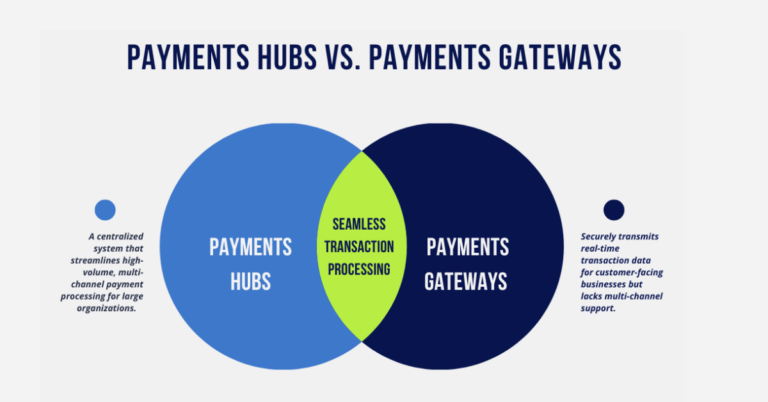What is FedNow?
The Federal Reserve is revolutionizing the payments landscape with its FedNow® service, providing seamless and real-time transactions for financial institutions and their customers. This instant payments service is designed for uninterrupted 24/7/365 processing. It integrates clearing functionality, enabling financial institutions to provide end-to-end instant payment services to their customers. However, even with the recent launch, misconceptions surrounding the system still remain. Here are the top questions being asked about the FedNow service.
Will FedNow replace PayPal/Cash App?
While the introduction of FedNow has garnered attention as a potential disruptor in the realm of money transfers, it is unlikely to completely replace popular platforms like PayPal. The Federal Reserve has been clear in stating that FedNow is not intended to eliminate or supplant existing options such as Venmo, Cash App, PayPal, or Zelle. Instead, it complements existing payment methods, offering financial institutions an additional avenue for faster, more secure transactions.
Who will use FedNow?
The FedNow service is designed to be used by a wide range of participants. Eligible depository institutions, such as banks, credit unions, and other financial entities within the Federal Reserve system, will have direct access to FedNow. Individuals, merchants, and non-bank payment service providers can access the service through their respective financial institutions. This inclusive approach ensures that businesses of all sizes and everyday consumers can benefit from the convenience and efficiency of the FedNow service.
What is the difference between FedNow and Fedwire?
FedNow and Fedwire are distinct payment systems offered by the Federal Reserve, each with unique characteristics. Fedwire, a real-time gross settlement system, enables instantaneous transfers of large-value payments between banks, businesses, and government entities. However, it operates within designated business hours and is subject to limitations on weekends, holidays, and non-business days.
In contrast, FedNow sets itself apart by providing round-the-clock accessibility. It operates 24/7, including weekends and holidays, allowing users to initiate and receive real-time payments at any time. While FedNow imposes a maximum value limit on transactions, individual banks may establish their own limits for Fedwire transfers. This key difference in availability and transaction limits makes FedNow a more flexible and convenient option for immediate payments, catering to the evolving needs of individuals and businesses in today’s digital economy.
What are the benefits of FedNow?
FedNow offers several benefits that are expected to have a significant impact on the payments landscape:
- Increased Access: By making instant payment technology accessible to a wider audience, including smaller community banks, FedNow promotes equitable access for businesses and individuals.
- Cost Savings: The implementation of FedNow is projected to reduce payment processing costs for banks and non-bank financial institutions. By streamlining payment settlement processes and eliminating intermediaries, these entities can optimize operational efficiency and realize cost savings, ultimately benefiting both the institutions and their customers.
- Improved Cash Flow: Individuals will experience the benefits of FedNow through instant access to paychecks and other electronic fund transfers. This enables better cash flow management by eliminating the delays associated with traditional payment methods, allowing individuals to access funds immediately for their financial needs.
- Enhanced Business Operations: FedNow facilitates efficient liquidity management and cash flow forecasting for businesses. With real-time payment capabilities, businesses can optimize their operational expenses, ensuring timely payments to vendors and suppliers. This enhances cash flow stability, strengthens business relationships, and contributes to overall operational efficiency.
- Advanced Data Exchange: FedNow conforms to the ISO 20022 standard, enabling participants to exchange rich data during payment transactions. This includes non-value message types and Request for Payment (RfP) messages, providing comprehensive information that can enhance transactional transparency, reconciliation, and business processes.
- Enhanced Security: FedNow contributes to the promotion of instant payment security by developing industry-wide standards for disputing fraudulent transfers. Its adherence to the ISO 20022 standard and the utilization of payment authentication mechanisms further strengthen the security framework, reducing the risks associated with fraudulent activities.
What are the business use cases for FedNow?
The FedNow Service by the Federal Reserve expands the capability of real-time payments beyond peer-to-peer transactions, catering to a broad spectrum of financial institutions. Use cases for this service range from account-to-account transactions to digital bill payment and prompt insurance claim disbursements. It’s also perceived as a tool that could streamline business operations by enabling instant payment of invoices, thus improving efficiency and cash flow. One notable feature, the “Request for Pay (RfP)“, is seen as fundamental to instant payments, addressing the growing demand from businesses and consumers for immediate transactions. As the FedNow Service evolves, it is expected to foster innovation in financial services, creating a platform for financial institutions, processors, and fintechs to develop new offerings, including potential novel types of payments as we move further away from cash.
What is the limit on FedNow?
The Federal Reserve has announced the pricing approach for the recently launched FedNow Service, which includes a $25 monthly participation fee per routing transit number (RTN), a $0.045 fee per transaction for senders, and a $0.01 fee for request for payment (RFP) messages. Additionally, the initial credit transfer transaction value limit is set at a maximum of $500,000, with the default limit at $100,000, allowing financial institutions to adjust it as needed. These details provide stakeholders with valuable information to prepare for the implementation of the FedNow Service and understand the associated costs and transaction limits.
How is FedNow different from RTP?
While FedNow and the Real-Time Payments (RTP) network share the goal of providing 24/7 real-time payment services, there are several differences between the two systems. Initially, FedNow will function primarily as an alternative to RTP, aiming to increase access and introduce healthy competition. One key distinction is the transaction limit, with FedNow capping transactions at $500,000 compared to RTP’s $1 million.
FedNow stands out with its liquidity management tool, enabling instant payment liquidity transfers between participants and financial institutions with real-time capabilities. Although RTP has a head start, the Federal Reserve’s broad reach and market access have the potential to level the playing field and drive substantial growth through healthy competition. It is essential for financial institutions to partner with trusted real-time payment technology providers to seamlessly connect to both FedNow and RTP, maximizing the value of their investments in these systems.
Will FedNow be mandatory?
Participation in FedNow is not mandatory. However, it offers financial institutions an opportunity to enhance their payment services and meet evolving customer expectations.
What is the timeline for FedNow?
The FedNow Service launched in July 2023.
How is FedNow being rolled out?
The Federal Reserve announced that more than 110 organizations, including Alacriti are participating in the FedNow Pilot Program. As a participant in the program, Alacriti actively contributes to shaping the features and functions of FedNow, providing valuable input into the user experience, and ensuring readiness for testing. This collaboration will play a vital role in defining the service and adoption roadmap, industry readiness approaches, and overall strategy for instant payments.
Bonus Question: What are the four categories of certifications that were part of the FedNow certification announcement?
The Federal Reserve announced that certified service providers must complete testing certification to provide payments processing to participants. This includes Receive only, Send and Receive, Receive RFP, and Liquidity Management Transfer. Alacriti is one of just 5 providers (out of a total of 17) that have all 4 participation types.
Learn more about the FedNow Service in the webinar, Top 10 Misconceptions about the FedNow Service, with Alacriti and the Federal Reserve co-presenting.
Alacriti’s centralized payment platform, Orbipay Payments Hub, provides innovation opportunities and the ability to make smart routing decisions at the financial institution to meet their individual needs. Financial institutions can take full ownership of their payments and control their evolution with ACH, Wire, TCH’s RTP® network, Visa Direct, and the FedNow® Service, all on one cloud-based platform. To speak with an Alacriti payments expert, please contact us at (908) 791-2916 or info@alacriti.com.




